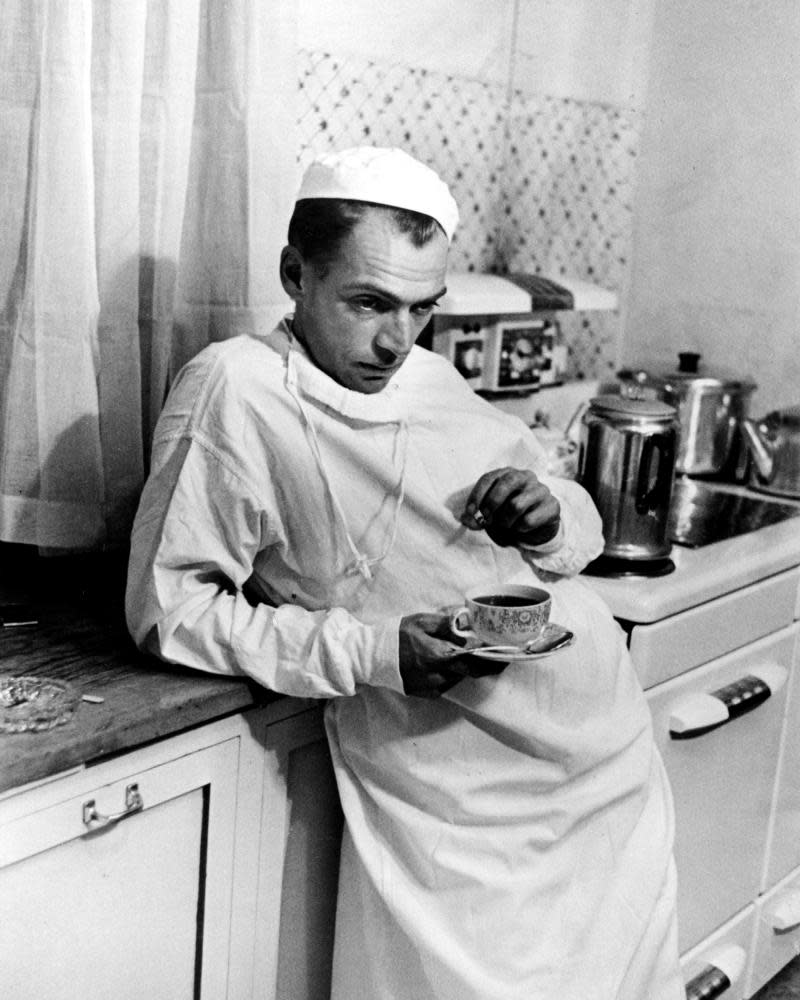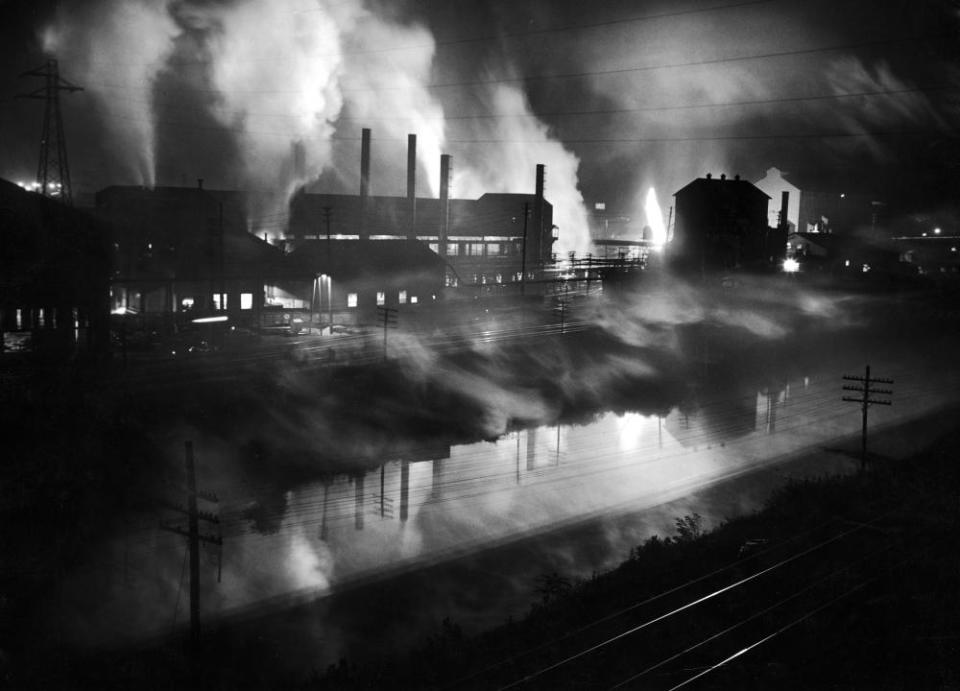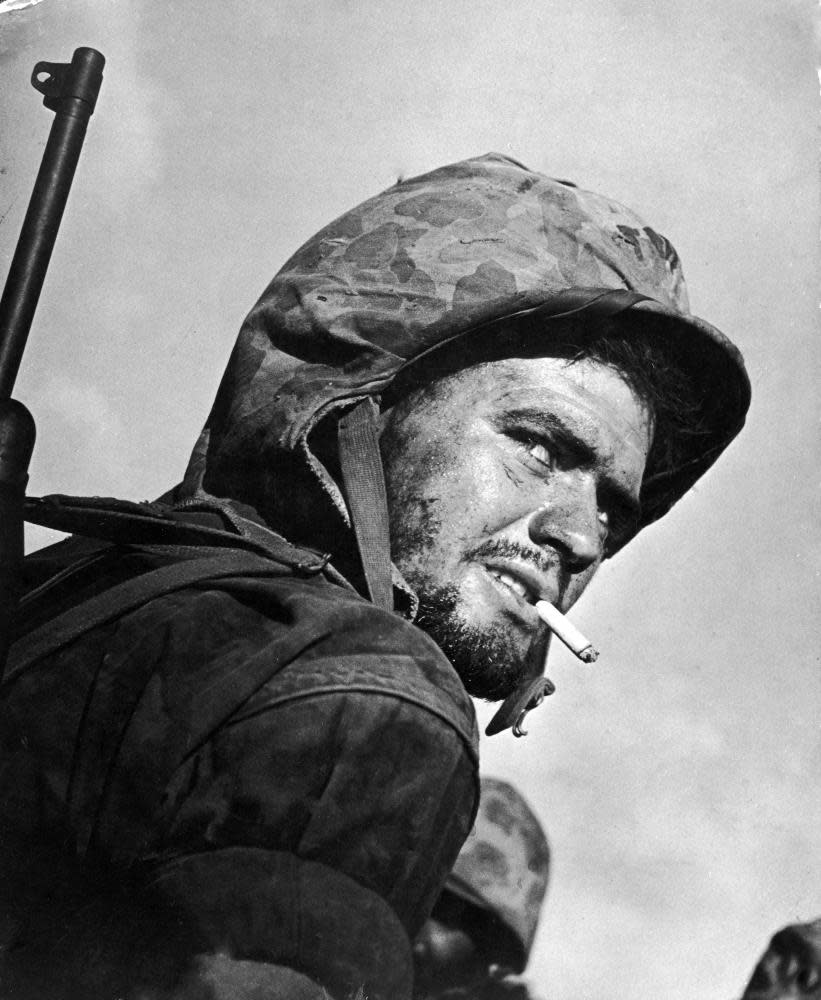W Eugene Smith, the photographer who wanted to record everything

In April 1977, the photographer W Eugene Smith sat in a wheelchair in 23rd Street in New York and oversaw the loading of his vast archive into two removal trucks by a team of young volunteers. Among material carried out of his loft and transported to the Center for Creative Photography in Arizona were several hundred thousand photographic prints and negatives, hundreds of notebooks filled with his writings, boxes of cameras and accessories, 25,000 LPs and 8,000 books. His entire archive filled a high-school gymnasium, floor to ceiling, and weighed about 22 tonnes.
Like many photographers, Smith was obsessive in the pursuit of his vision, but fuelled by alcohol and a long-term addiction to amphetamines, his compulsive behaviour had over the years become extreme. Among his archives were several boxes containing photocopies of all the letters he had ever written.
More startling still are the 1,740 reels of audio tape, which were made by Smith between 1957 and 1965 in his previous loft apartment in 6th Avenue near West 28th Street. They contain around 4,500 hours of mostly ambient recordings often caught clandestinely on microphones he draped on dangling leads throughout the loft and in its stairways. These tapes reveal Smith’s seeming desire to document everything going on around him – and not just through photographs. They include hundred of hours of recordings of the many jazz musicians who gravitated there after hours; the likes of Thelonious Monk, Roland Kirk, Sonny Clark and Chick Corea, but also the conversations of stellar visitors including Norman Mailer, Salvador Dali and Anaïs Nin, as well as visiting photographers such as Henri Cartier-Bresson, Diane Arbus and Robert Frank.

“For each famous person,” writes Sam Stephenson in his fascinating book, Gene Smith’s Sink: A Wide-Angle View, “there were dozens of obscure musicians, pimps, prostitutes, drug addicts and dealers, dropouts, hustlers and thieves, beat cops and buildings inspectors, photography students, frame makers, fire extinguisher technicians and countless other figures”.
Written on a desk customised from Smith’s darkroom sink, Stephenson’s evocative book is the result of 20 years of research into the life of an American documentary photographer who, having been revered in his lifetime, is now regarded in the digital age with a kind of respectful curiosity.
Smith was perhaps the single most important American photographer in the development of the editorial photo essay. His visual narratives, usually published in Life magazine, were often brutally atmospheric. He evoked the horrors of the second world war in the Pacific, where he was injured by mortar fire, and chronicled the working life of Dr Ernest Ceriani in the small town of Kremmling, Colorado, in his 1948 series, Country Doctor, now recognised as the first extended editorial photo story.
In 1955, Smith became a member of the Magnum picture agency, travelling to Pittsburgh for his first assignment, which entailed producing 100 photographs in three weeks to mark the city’s first centenary. He worked on the project for three years, producing around 21,000 photographs. Today, his legacy is maintained by the W Eugene Smith Memorial Fund, which celebrates and encourages the kind of humanistic photography he pioneered, if not the impossible tasks he set himself and his beleaguered editors.
Even more than his photographs, Stephenson argues, the audio tapes provide an insight into the turbulent mind of one of the most elusive and troubled of the great generation of pioneering postwar American documentary photographers. “Critics have argued that his photography was motivated by his huge ego and, to a degree, that’s not wrong,” says Stephenson, citing Smith’s fractious departures from Life and Newsweek, the magazines that had helped establish his reputation as a humanist documentarian. “But what was the motivation for the tapes? They are certainly not ego-driven. There was nothing he could have done with them creatively or commercially. The irony is that they indicate what was motivating him more than anything else, but what that was exactly remains unknowable. It is part of the great complex psychological mystery of W Eugene Smith.”

Born in Wichita, Kansas in 1918, Smith began taking pictures for local newspapers in his late teens, encouraged by his mother, who worked as a photographer and had a darkroom in the family house. Their life was disrupted in the most brutal way on 30 April, 1936, when his father killed himself with a shotgun in a hospital car park just a month before his son graduated from high school. Smith won a photography scholarship to the University of Notre Dame in Indiana but soon afterwards moved to New York and, aged 20, was working as a freelance photographer. For a time, he shared a house in the Bronx with his mother, who worked as his darkroom assistant and organised his working itinerary. She was, writes, Stephenson, “a devout, converted Catholic, domineering and stern... From her, he inherited an indomitable willpower”.
Even at this early age, Smith was an unpredictable and self-sabotaging individual. At Newsweek, he was fired for repeatedly using a small-format camera that the magazine’s photo department prohibited. He quit Life a decade later after a row about how they had presented one of his images of the Nobel prize-winning physician and humanitarian campaigner Albert Schweitzer.
Controversy dogged him even after his death: what many consider his most powerful photograph, Tomoko Uemura in Her Bath (1971), a starkly intimate portrait of Ryoko Uemara bathing her naked daughter, Tomoko, who has severe deformities from the effects of mercury poisoning, was withdrawn from further publication in 1997 at the wishes of Tomoko’s family.
Throughout his career, Smith railed against authority, often alienating the very editors whose imposed boundaries he needed when his obsessive quest for perfectionism became self-defeating. “Whatever demons that drive him were certainly not appeased by the alcohol and amphetamines,” says Stephenson. “One of the themes that I hope is apparent in the book is the sense that he needed care and attention in order to get his work done. Mostly he didn’t have it in his life, because he was so hard to work with. It is one of the great ironies of his life that he alienated the people – editors, assistants – who would have helped him the most.”
One of the regulars at Smith’s loft, which became known as the jazz loft, was the great pianist Thelonious Monk, just one of several gifted eccentrics drawn to the mercurial photographer. Smith made some atmospheric photographs of Monk playing, but also recorded him talking with another musician, Hall Overton, who shared another section of the vast loft space. On one tape, they discuss musical arrangements for a forthcoming concert by Monk at the town hall, the first time he ever performed with a big band. “These arrangements are crazy. I like ’em,” enthuses Monk at one point, adding: “Boy, I tell you they’re going to sweat their balls off on that [song] Little Rootie Tootie.” For jazz historians, it provides a rare and illuminating glimpse of the eccentric Monk’s working methods. “I’ll play the first chorus,” he says of another composition. “Let the band come in and play the second chorus and finish that. And then we get up, you know, and get our bread and quit.”

Other tapes, though, evoke the often dogged lives these jobbing musicians lived from day to day. Stephenson devotes a chapter to the brilliant but doomed jazz pianist Sonny Clark, who is caught on a tape from 1961 climbing the stairs to the fourth floor with his pregnant 17-year-old girlfriend, Virginia McEwan, and the saxophonist Linn Halliday. In the hallway bathroom, the two musicians shoot up heroin and Halliday can be heard growing panicky as Clark passes out from an overdose. Halliday sings Hit the Road, Jack to the pianist to try to keep him conscious. The supremely gifted Clark would later die of a heroin overdose, aged 31, in January 1963. The recording, in all its lo-fi ambience, is like an augury of his early death.
Another chapter titled What Happened to Ronnie Free? traces the harsh life of a jazz drummer, who, as Stephenson puts it, “is the most ubiquitous presence on Smith’s recorded tapes other than Smith himself”. Free is heard drumming on more than 100 reels of tape, amounting to an astonishing 250 hours of playing. Then he simply disappears.
Stephenson’s dogged detective work leads him to Hot Springs, Virginia, where Free is “playing drums in obscurity at the Homestead Resort”. He recounts episodes from a childhood in which he was tyrannised by his violent father and an adult life dogged by repeated bouts of depression that culminated in a mental breakdown. “One thing that’s not talked about often is that you almost have to kind of hide out in order to develop your craft,” Free tells Stephenson. “You have to be isolated in order to practise to be any good. That’s what Smith’s loft provided, a place to isolate and practise.”
The book is populated by intriguing characters, many of whom are not obvious choices: Stephenson opts to speak to Mary Frank rather than her ex-husband, the great photographer Robert Frank. He tracks down a woman called Ruth Fetske, who studied for a time under Smith on a course he had entitled, with characteristic contrariness, “Photography Made Difficult”. She is one of the many previously unsung helpers Smith depended on, visiting his loft regularly to deal with his stacks of unopened mail and fend off debt collectors.
“It struck me early on that the women in his life were less well known and less heard,” says Stephenson. “I’m not in the business of iconography, so I thought it would be more accurate somehow to trace these often obscure figures who were so important in his life. One thing I found out is that, despite his difficult personality and his chaotic life, many people loved him. They tended to be the people who did not expect anything of him. If you were an editor or a publisher, though, he was a nightmare to deal with.”

In many ways, Smith was a photographer’s photographer. The endless hours he spent in the darkroom meticulously adjusting the light and shadow on his darkly toned prints speak of a devotion that other image-makers instinctively recognised, even if the years spent working on his epic sequences of images often failed to lead to an exhibition or a book. “At times,” says Stephenson, “it seemed like he was pathologically unable to finish a project.”
In 1963, the young Larry Clark turned up on Smith’s doorstep in search of advice and reassurance. Smith greeted him with the words: “I’ve been in the darkroom without any sleep for a week. I’m so tired I can hardly stand up.” Clark reluctantly left a bunch of prints that would later become Tulsa, his now famous book of hardcore documentary images of his junkie friends. Smith was blown away by the raw veracity of the images and invited Clark back to the loft. The two became friends, bonding over “warm scotch out of paper cups”.
For all that, the wayward individual that emerges out of Stephenson’s ambitious “wide angle” approach remains essentially unknowable, a blur in an otherwise sharply defined portrait of a tougher time and a truly bohemian milieu that already seems impossibly distant. I wondered if Stephenson’s opinion of the object of his elusive devotion had altered over the course of his long labour of love. “Well, I rate him even more highly as a photographer now, particularly for his Pittsburgh work, in which he captured American industrial urbanism at its pinnacle. For me, it’s his crowning achievement. But the book is about the life more than the work and, for me, tapes were the way into that life. Put it this way, if he had not made those tapes, I would not have spent 20 years of my life researching the book. I would not have followed the leads and connections to the many extraordinary characters in that life. For me, the characters that were drawn to his loft are the truest reflection of who he was.”
• Gene Smith’s Sink by Sam Stephenson is published by Farrar, Straus and Giroux on 22 August ($26)


